-
Posts
15,793 -
Joined
-
Last visited
Content Type
Events
Forums
Downloads
Quizzes
Gallery
Blogs
Posts posted by geovalin
-
-
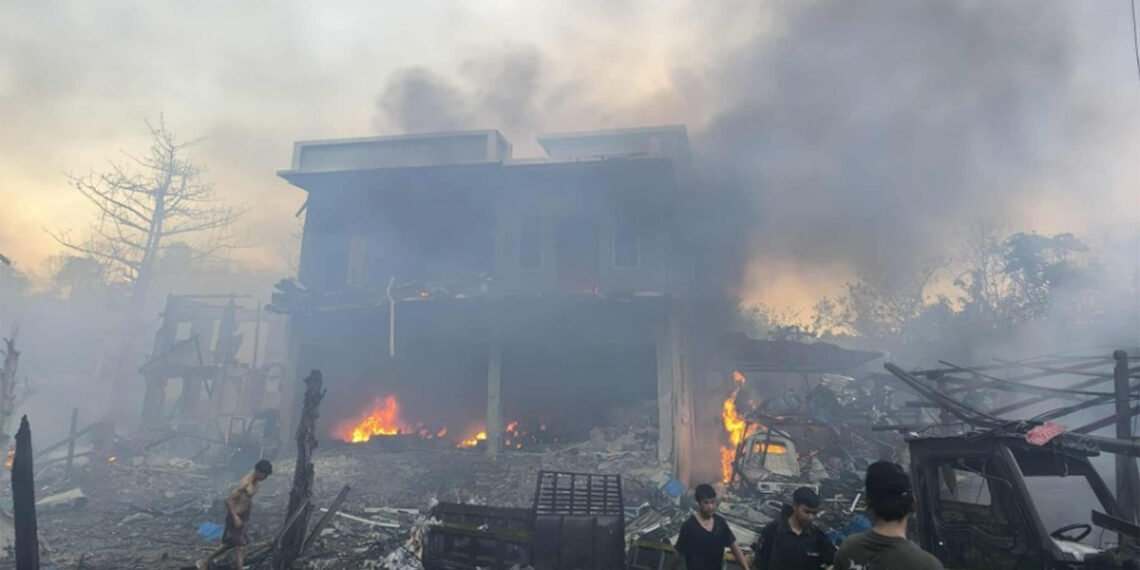
CJ
Malaysia’s Prime Minister Anwar Ibrahim has urged Myanmar’s military leader to uphold a fragile ceasefire declared after the devastating 28 March earthquake, amid ongoing violence that threatens to derail humanitarian aid efforts.
Anwar, who currently chairs the Association of Southeast Asian Nations (ASEAN), met junta chief Min Aung Hlaing in Bangkok on Thursday for closed-door talks. Despite being barred from ASEAN summits over the junta’s failure to progress on a 2021 peace plan, Min Aung Hlaing attended the meeting during a stopover for bilateral talks with Thai officials.
“I told him it’s important to cease fire,” Anwar told reporters on Friday. “It’s important to allow for humanitarian efforts to cover all of Myanmar, irrespective of where they are or what political position they take.”
The military regime declared a ceasefire until 22 April following the 7.7 magnitude quake, which killed at least 3,700 people and left 60,000 in tents, according to the United Nations. Yet, fighting reportedly persists, with observers citing continued junta airstrikes and clashes with rebel groups.
Though Anwar claims assurances were made, a statement from Myanmar’s military made no mention of peace overtures, instead focusing on “rehabilitation cooperation” after the earthquake.
The junta has maintained its position that it will retaliate against any attacks, raising concerns over whether the ceasefire is genuine or merely symbolic. The post-quake crisis has left two million people in urgent need of aid and protection, compounding an already dire humanitarian situation.
Anwar also held talks with Mahn Winn Khaing Thann of Myanmar’s shadow National Unity Government (NUG), which has called for a boycott of the junta’s proposed elections later this year. Critics argue that any vote held under military oversight would lack legitimacy in a country fractured by civil war and mass displacement.
“We are not pushing this too fast,” Anwar said of ASEAN’s approach, “because we want this sort of consensus… to ensure there is fair and free elections.”
Whether that vision can be realised remains deeply uncertain.

-2025-04-21
-
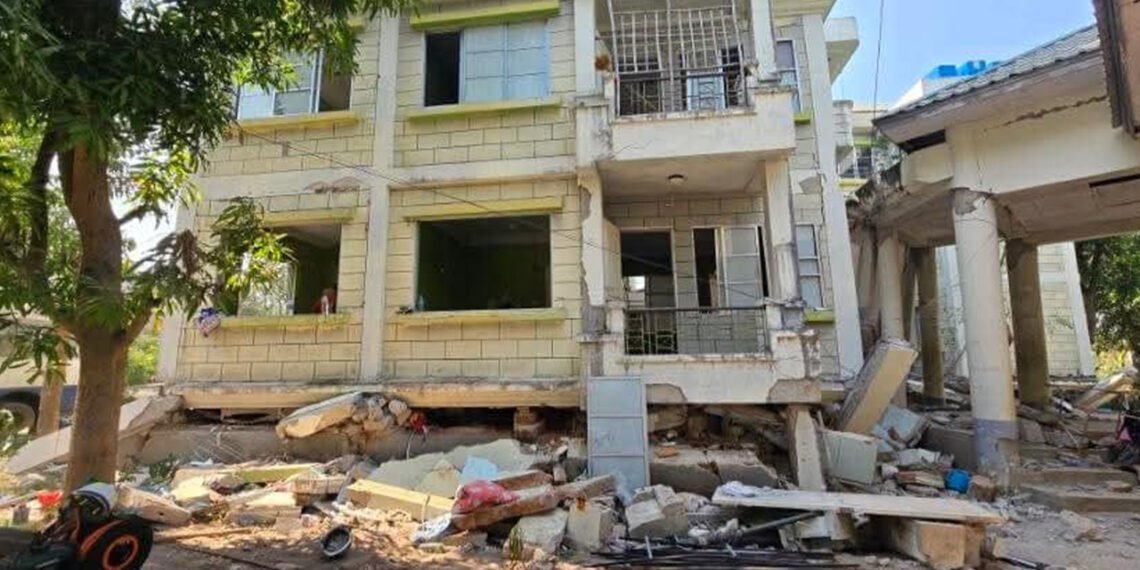
CJ
Myanmar’s military government has announced sweeping plans to redraw the layout of the capital, Nay Pyi Taw, following last month’s deadly 7.7 magnitude earthquake that left much of the city in ruins.
Senior General Min Aung Hlaing confirmed the move during a high-level government meeting, stating that many buildings collapsed because they were constructed on soft, unstable soil. The general ordered that any reconstruction must include earthquake-resistant designs, with soil stability testing to precede all rebuilding efforts.
State media reports over 3,500 fatalities and more than 5,000 injuries nationwide from the 28 March quake, which also caused tremors as far as Thailand and China. In Nay Pyi Taw, the BBC reports that around 70% of government buildings were damaged, prompting an urgent relocation of key ministries.
The Ministry of Foreign Affairs and the Ministry of Tourism are among those reportedly shifting to Yangon, Myanmar’s former capital. Others are operating from temporary steel-framed structures known as "hotai" in Nay Pyi Taw, while emergency efforts focus on salvaging vital documents and cultural materials from government buildings and the National Museum.
Built in 2005 as a meticulously planned administrative centre, Nay Pyi Taw is known for its vast boulevards and underused infrastructure. It spans an area four times that of London but houses a fraction of the population. Its creation and continued role as the seat of power remain symbolic of Myanmar’s military rule.
Despite a declared 20-day ceasefire on 2 April to support recovery, reports suggest the military has continued operations in rebel-held regions, underlining the instability that persists across the country.
The reconstruction of Nay Pyi Taw is expected to take years, and while officials have pledged resilience, the scale of the damage raises questions about the city’s long-term viability as the nation’s administrative core.

-2025-04-21
-
 1
1
-
-
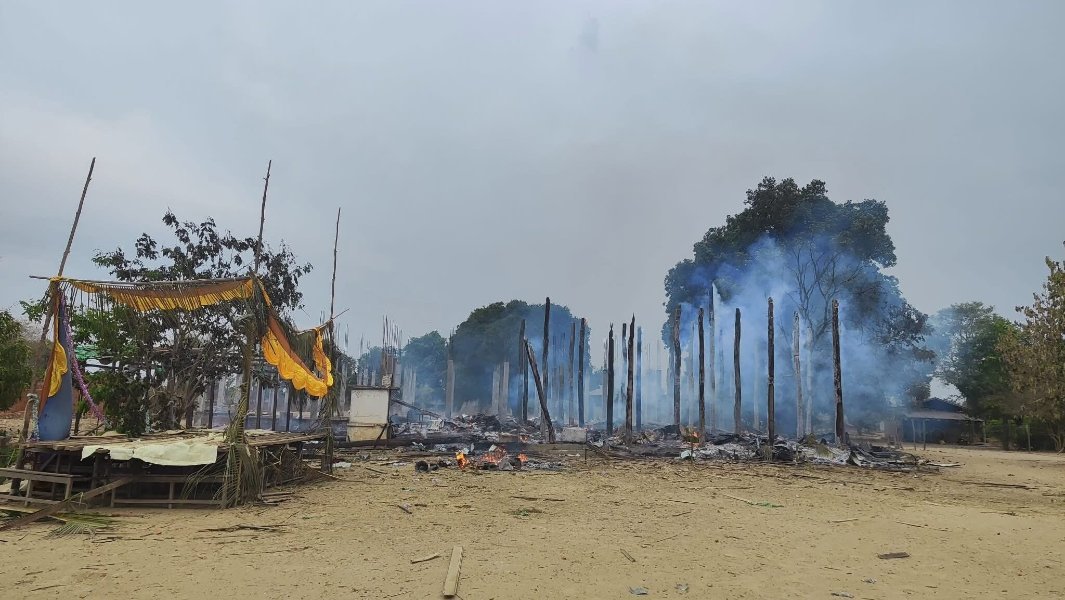
TAZE media
At least 23 civilians, including children and Buddhist novices, were killed in a wave of Myanmar junta airstrikes launched over the Thingyan New Year holiday, according to local sources.
From April 13 to 16, the military regime reportedly carried out at least 26 airstrikes across seven regions, targeting monasteries and villages even where no active fighting was reported. The Irrawaddy news outlet, citing local resistance groups and witnesses, said over 50 others were injured in the attacks, which spanned Magwe, Sagaing, Mandalay, and Bago regions, as well as Rakhine, Chin, and Karen states.
Among the dead were four children and a pregnant woman. Many of the injured were monks and novices, as monasteries—traditionally places of peace and spiritual gathering during the Thingyan festival—were repeatedly bombed.
In one of the most harrowing incidents, a YAK-30 fighter jet struck a monastery in Kanni Village, Karen State, on Tuesday afternoon, killing six people and injuring 17. The next day, a Y12 aircraft dropped bombs on another village in the area, killing five more. Meanwhile, Sagaing’s Kani Township was hit by drones and paramotors, with bombs dropped on seven villages, including one that killed two Buddhist novices.
Despite the junta’s declared ceasefire following the devastating 28 March earthquake—which claimed over 3,700 lives—the airstrikes have continued. The civilian-led National Unity Government (NUG) and several ethnic armed groups had earlier announced their own ceasefires to facilitate rescue and mourning, but the military’s ongoing attacks have shattered hopes for even temporary calm.
Myanmar’s Human Rights Ministry, aligned with the NUG, reported 92 junta-led bombardments across 12 regions between 28 March and 8 April alone, with 72 civilians killed and 91 injured during that period.
The junta’s Thingyan bombing campaign underscores the relentless violence still gripping Myanmar more than four years after the military seized power. Even amid national mourning and religious observance, no place—monasteries included—has proven safe from the skies.

-2025-04-18
-
 1
1
-
-
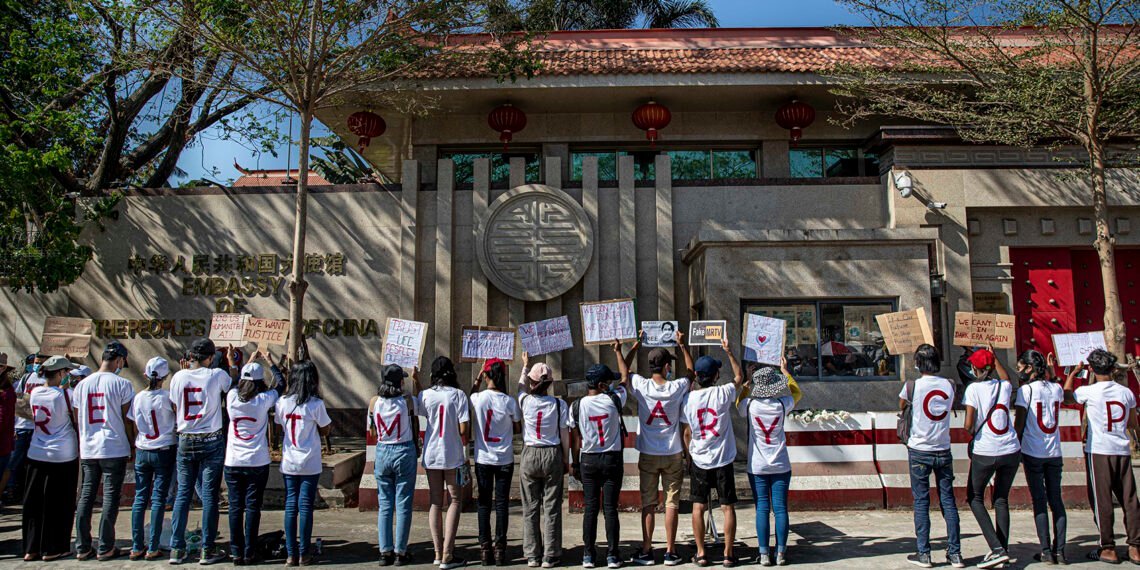
The Irrawaddy
Myanmar’s military government has released nearly 4,900 prisoners as part of a traditional New Year amnesty, including at least 22 political detainees, in a move seen as both symbolic and strategic amid ongoing civil unrest.
State-run broadcaster MRTV confirmed on Thursday that Senior General Min Aung Hlaing had pardoned 4,893 individuals, with 13 foreign nationals among them set for deportation. The mass release came as Myanmar marked Thingyan, its New Year celebration, under the shadow of a devastating earthquake that killed over 3,700 people last month.
Buses carrying the newly freed prisoners departed Yangon’s infamous Insein Prison to emotional scenes—family members cheering and tearfully reuniting after often years apart. According to the Political Prisoners Network – Myanmar, the release included political detainees jailed under sweeping laws used to silence dissent since the 2021 military coup.
Among them was film director Dwe Myittar, also known as Steel, and Hanthar Nyein, a journalist imprisoned after the 2021 crackdown on media. Nyein had faced multiple charges including incitement and violating Myanmar’s controversial cyber law, which rights groups say criminalises free speech.
Despite these high-profile releases, critics point out that more than 22,000 political detainees, including ousted leader Aung San Suu Kyi, remain behind bars. While reduced sentences and conditional releases are common during Thingyan, the gesture does little to change the broader reality of Myanmar’s deepening repression.
The country remains gripped by civil war, with fierce clashes continuing between the military and armed resistance groups. The regime has promised to hold elections by year’s end, but few see the offer as credible.
In a muted New Year address, Min Aung Hlaing pledged reconstruction in earthquake-hit areas and called for peace talks—but gave no hint of concessions. Meanwhile, human rights groups warn that this amnesty, like others before it, may be more about optics than real reform.
As buses pull away from Insein, the gesture of freedom for some offers a flicker of hope—but for many in Myanmar, the road ahead remains perilous and uncertain.

-2025-04-18
-
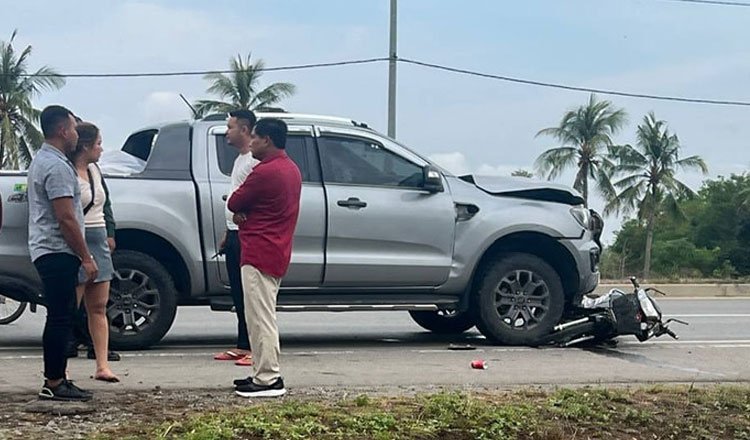
KTAt least 36 people lost their lives and 66 others were seriously injured in road accidents during Cambodia’s Khmer New Year festivities, the National Police confirmed on Wednesday.
Spanning five days from 12 to 16 April, the holiday period saw 44 traffic accidents nationwide—slightly fewer than the 50 recorded during last year’s celebrations, which took place over four days. Fatalities also dipped from 39 to 36, suggesting a modest improvement in road safety, though the figures remain stark.
The Department of Traffic and Public Order Police identified the main causes as speeding, reckless overtaking, driving under the influence, and failing to respect traffic rules—especially at night. Driving on the wrong side of the road and making hazardous turns were also key contributors to the carnage.
Khmer New Year is one of Cambodia’s most widely celebrated festivals, prompting millions to travel to their home provinces or holiday destinations. The surge in traffic—combined with festive drinking and poor enforcement—often leads to a spike in road-related deaths and injuries.
Authorities had ramped up public awareness campaigns and deployed more officers during the holiday, but the figures suggest significant challenges remain in tackling Cambodia’s persistent road safety crisis.
While officials welcomed the slight year-on-year decline, the toll remains sobering.
As celebrations give way to mourning for dozens of families, pressure is mounting on authorities to tighten enforcement, improve infrastructure, and encourage safer driving behaviour—before next year’s holidays roll around once more.

-2025-04-18
-
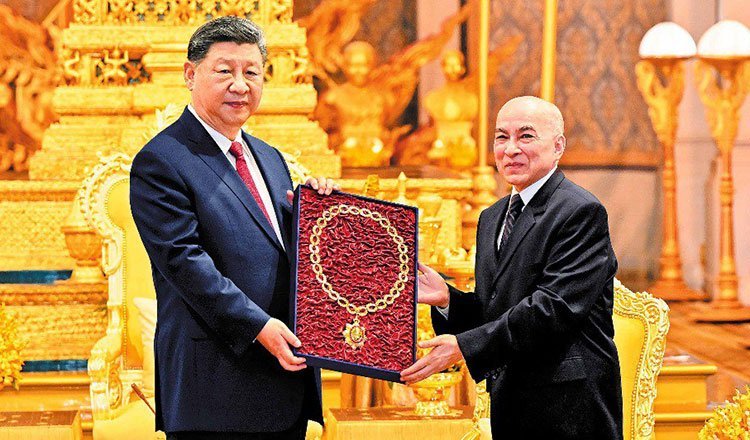
Here, with the King Sihamony, Xinhua
Chinese President Xi Jinping has called on Cambodia to "resist protectionism" as both nations navigate rising trade tensions with the United States, wrapping up a tour of Southeast Asia with a visit heavy on symbolism but light on substance.
Arriving in Phnom Penh on Thursday, Xi praised the “ironclad friendship” between China and Cambodia while urging a united front against what he described as “hegemonism” and protectionist policies—thinly veiled references to recent US tariffs. Cambodia, a key exporter of garments and footwear to the US, has been hit with one of the world’s highest tariff rates at 49 per cent. While many of these duties are paused until July, China faces a combined 145 per cent in tariffs.
Xi’s visit comes amid cooling Chinese investment in the region. Despite past pledges of support, Beijing signed no new loans to Cambodia last year. Hopes that China would fully fund the $1.7 billion Funan Techo Canal remain in question, with Phnom Penh shifting its message from full backing to partial support covering just under half of the project’s cost.
Still, Cambodia appears eager to keep China close. “We expect more cooperation including on infrastructure,” said finance ministry spokesman Meas Soksensan. But no fresh financing was announced, despite Xi’s public support for Cambodia’s development.
The visit also touched on a thornier issue—Chinese-run online scams operating from Cambodian soil. Xi urged a crackdown, echoing Beijing’s long-standing concern over criminal networks that have lured Chinese citizens into fraud schemes or forced labour. Ahead of Xi’s arrival, Cambodia deported a number of alleged Chinese criminals, including some from Taiwan—drawing Beijing’s praise and Taipei’s ire.
Xi was greeted along Phnom Penh’s roads by cheering crowds waving Chinese flags, in scenes broadcast widely on social media. Yet behind the public displays of friendship, many observers noted the absence of concrete outcomes.
“Lots of flags, lots of MoUs and lots of bromances, probably not a lot of substance,” quipped one Western diplomat based in Cambodia.
As Washington’s tariff stance casts a shadow over Asia’s economies, Xi’s message is clear: China wants allies who will echo its opposition to US-led trade pressure. Whether Cambodia gains more than warm words from that alliance remains to be seen.

-2025-04-18
-
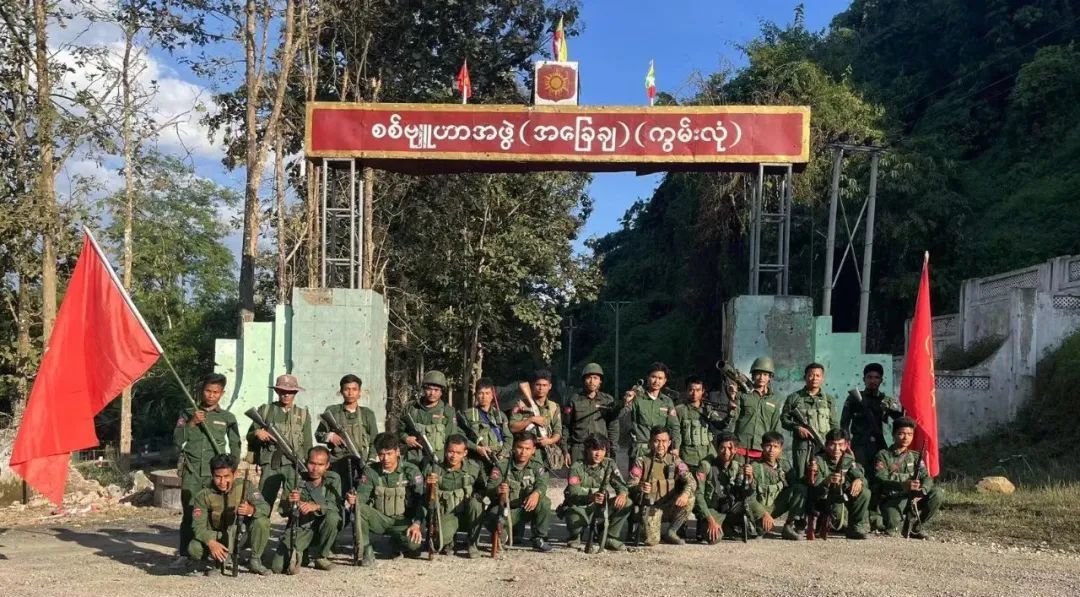
Myanmar National Democratic Alliance ArmyA major insurgent group in northern Myanmar is preparing to pull out of the strategic city of Lashio by 22 April, in a move driven by mounting pressure from China.
The Myanmar National Democratic Alliance Army (MNDAA), a powerful ethnic armed group, is quietly dismantling its presence in the city following a high-level meeting in Kunming between Chinese officials, Myanmar’s military junta, and MNDAA leaders.
Residents in rebel-held areas say ward offices have already begun shutting down, with remaining operations set to close by mid-April. “Everyone is waiting for April 22,” one local told Radio Free Asia, requesting anonymity due to security concerns.
Though no official statement has been made, only the MNDAA’s communications office and local police are expected to stay behind. Troops, equipment, and administrative departments are reportedly being moved to nearby towns of Laukkiang and Hsenwi.
The group, which seized Lashio in August 2024 during the joint Operation 1027, is part of the Three Brotherhood Alliance alongside the Ta’ang National Liberation Army and Arakan Army. Together, they have waged a fierce resistance against Myanmar’s military junta since the 2021 coup.
Lashio’s capture prompted intense retaliation, including repeated airstrikes and, more recently, destruction from the devastating 28 March earthquake. Large parts of the city now lie in ruins.
Some locals see the withdrawal as a necessary step to avoid further bloodshed. Others remain uneasy, fearing what comes next. Despite the retreat, MNDAA fighters are expected to remain stationed just five kilometres outside the city.
China, which shares a long border with Myanmar, has been increasingly active in mediating talks between rebel forces and the junta, wary of instability spilling across the frontier.
Whether this tactical withdrawal paves the way for a lasting ceasefire—or is merely a pause in ongoing conflict—remains to be seen.

-2025-04-17
-
 1
1
-
-
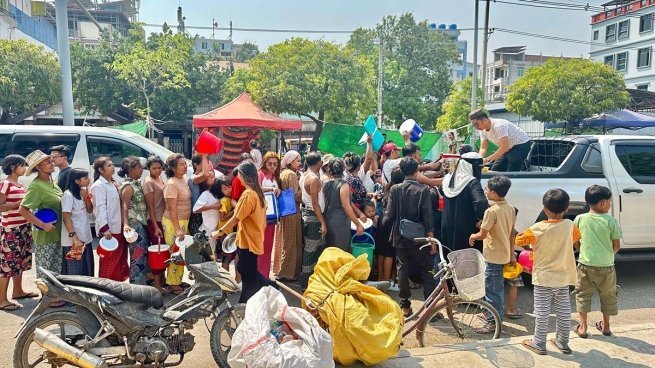
ANS Mandalay
Relief efforts in Myanmar are faltering under the weight of military airstrikes, blocked aid, and worsening conditions, weeks after the country's strongest earthquake in over a century.
The 7.7 magnitude quake on 28 March left a trail of devastation across central Myanmar, displacing over 60,000 people and killing thousands. Official figures from the junta cite 3,145 deaths, but independent sources like the Democratic Voice of Burma put the toll even higher—over 4,300 dead, nearly 8,000 injured, and hundreds still missing.
Entire communities have been reduced to tent encampments. Schools, monasteries, and villages lie in ruins, with survivors pleading for food, water, medicine, and shelter. “Many families are forced to beg for donations in the streets,” said Natty Tangmeesang, a Thai blogger who visited Sagaing.
But efforts to help are being hamstrung not just by the scale of destruction, but by a civil war that’s still raging. Despite a declared ceasefire, Myanmar’s military—known as the State Administration Council (SAC)—continues launching airstrikes in conflict zones, including quake-hit areas.
Khin Ohmar, founder of Progressive Voice Myanmar, accused the junta of blocking aid, threatening humanitarian workers, and demanding bribes. “The junta is extorting and obstructing,” she said, while local organisations and the opposition National Unity Government (NUG) try to reach those beyond the regime's control.
Though the junta made a rare appeal for international help, aid has been slow and insufficient. ASEAN states and countries including the UK, US, China, and South Korea have pledged funds or sent rescue teams. But much of the aid has been held up, and media access remains tightly restricted.
“There’s not enough support for transporting aid, setting up mobile clinics, or providing psychological care,” said journalist Soe Myint. Heavy rains have added to the misery, flooding already fragile camps around Mandalay.
The military continues to limit access for international journalists, while local media must rely on citizen reporters in areas they cannot safely reach.
Junta chief Min Aung Hlaing is due in Bangkok this week to meet Malaysia’s Prime Minister, who chairs ASEAN, in talks aimed at extending the ceasefire and securing aid routes. But with bombs still falling, hopes for meaningful humanitarian access remain grim.

-2025-04-17
-
 1
1
-
-
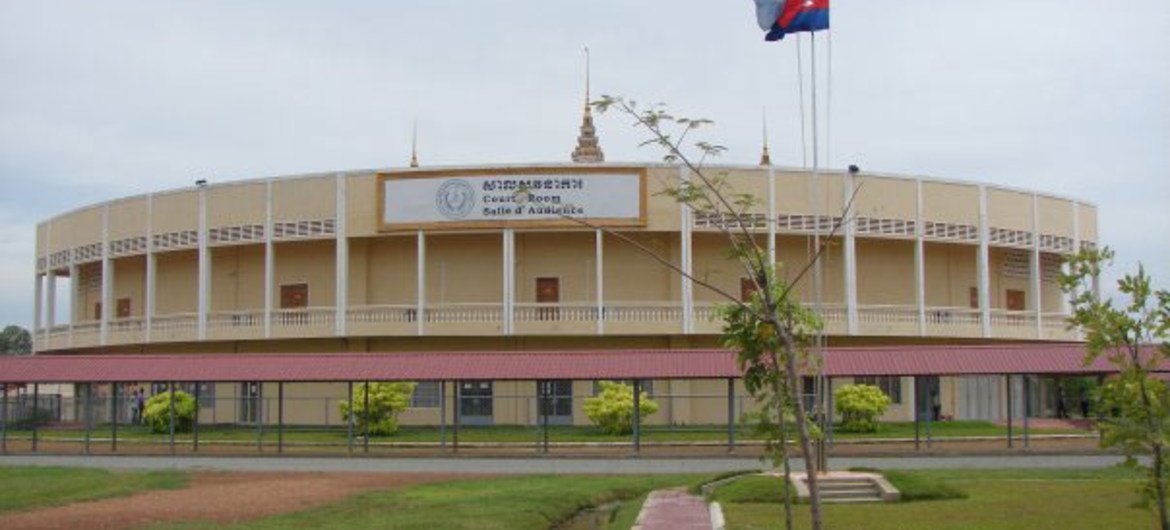
Extraordinary Chambers in the Courts of Cambodia (ECCC)
Fifty years after Phnom Penh fell to the Khmer Rouge, a converted bus is helping Cambodia’s youth confront a past many never knew.
It’s a mobile museum with a mission: to educate a generation born long after the reign of Pol Pot, whose ultra-Maoist regime killed around two million people through forced labour, starvation and mass execution between 1975 and 1979. Now, with two-thirds of the country under 30, the Extraordinary Chambers in the Courts of Cambodia (ECCC) is using this bus to bring the history directly to them.
At a high school in Phnom Srok, pupils pile into the air-conditioned vehicle to learn through comics, iPads and first-hand testimonies. One such voice is Mean Loeuy, a 71-year-old survivor who lost more than a dozen relatives. “By the end, it was one grain of rice with a splash of water,” he recalls of the labour camp where he toiled.
Nearby, the Trapeang Thma reservoir—built by forced labour—stands as a silent memorial to the thousands who died during its construction. In a local pagoda, skulls of the victims line shelves, an enduring reminder of the brutality.
But for students like 14-year-old Mouy Chheng, whose parents spoke little of the past, this is a revelation. “I was not born under the Khmer Rouge,” she says. “Now I understand a lot more.”
Since its launch in early 2024, the initiative has reached over 60,000 students in 92 schools, with plans to visit 100 by year’s end. Lawyer and educator Ven Pov leads the sessions, fielding tough questions: Why wasn’t Pol Pot tried? Why weren’t leaders executed? How could famine kill so many?
Though the ECCC convicted just three Khmer Rouge leaders before ending its trials in 2022, the court left behind a vast archive of documents, now accessible to the public. Critics say politics limited its reach, with former Prime Minister Hun Sen—himself once Khmer Rouge—steering the process toward reconciliation over retribution.
Still, scholars argue the tribunal’s symbolic value endures. “Transitional justice isn’t just about punishing the guilty,” says Professor Timothy Williams. “It’s about teaching society.”
In a time of creeping authoritarianism, the past, brought to life on wheels, may offer the clearest guide for Cambodia’s future.

-2025-04-17
-
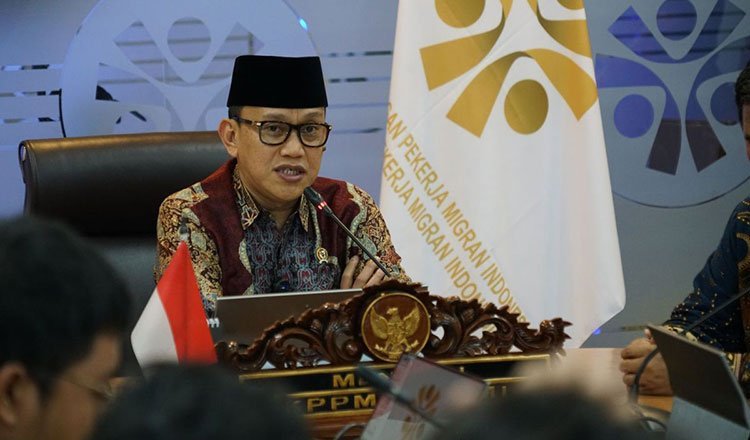
ANTARAA growing number of Indonesians—estimated at over 80,000—are working illegally in Cambodia, many lured into online scams and gambling operations, Indonesia's Minister for the Protection of Migrant Workers has revealed.
Speaking on Tuesday in Semarang, Central Java, Abdul Kadir Karding said the workers are classified as illegal due to the absence of a formal labour agreement between Indonesia and Cambodia. “All of these migrant workers are considered illegal,” he said. “We’ve seen a sharp rise in young Indonesians risking unsafe and unregulated employment abroad.”
The situation is particularly concerning as many of these workers are involved in illegal online industries. “Their occupations vary,” Karding noted. “Some work in restaurants, but most are tied to online gambling and scamming syndicates.”
This marks a shift from traditional destinations for Indonesian migrant workers, such as Saudi Arabia and Malaysia, with Cambodia and Myanmar now emerging as hotspots for illicit labour activity.
The minister also confirmed his office is investigating the reported death of an Indonesian worker in Cambodia. “We are trying to identify the victim, but illegal migration leaves us with no official records,” he said.
In response, the Indonesian government has begun cracking down on rogue recruitment agencies. “We’ve temporarily closed three illegal placement firms to stem the flow of undocumented workers,” Karding announced.
The warning highlights a growing regional concern over human trafficking and labour exploitation in Southeast Asia’s shadow economy. Indonesian authorities are urging citizens to avoid unauthorised overseas job offers and seek legal channels instead.
With no bilateral framework in place between Jakarta and Phnom Penh, efforts to protect these vulnerable workers remain limited. The ministry has vowed to intensify public education and enforcement to prevent further tragedies.
As the trend continues, calls are mounting for formal agreements and regional cooperation to address the root causes of illegal migration and cross-border exploitation.

-2025-04-17
-
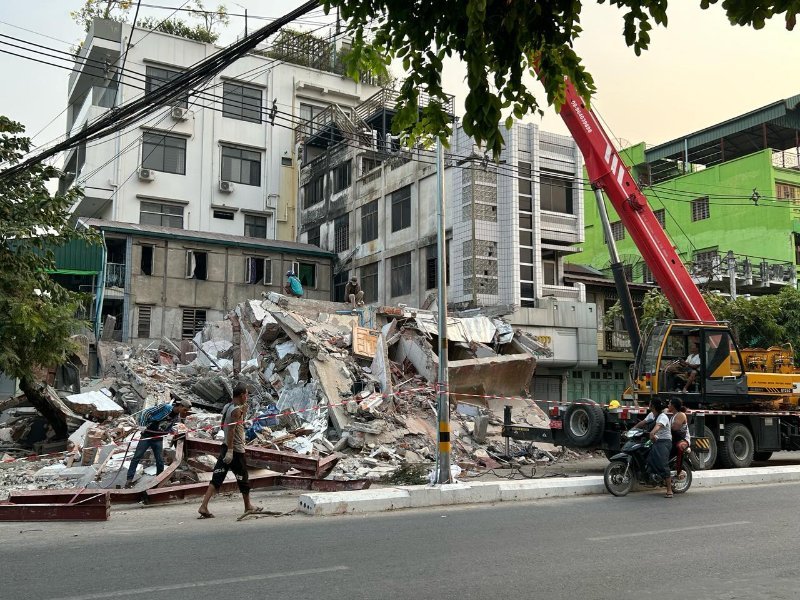
UNDP
At least 2.5 million tonnes of debris—roughly 125,000 truckloads—must be urgently cleared across Myanmar following last month’s powerful earthquake, according to a new analysis released by the United Nations Development Programme (UNDP).
The 7.7-magnitude quake, which struck in late March, has left parts of the country in ruins. Over 10,000 homes and public buildings are believed to be damaged or destroyed, while 128 health facilities may have suffered serious structural harm, leaving thousands without access to essential medical care.
Staggering Scale of Destruction
Remote sensing data shows that approximately 1.6 million buildings were in areas hit by “very strong” shaking or worse. Many of these structures were not built to withstand such force. Urban centres like Mandalay and Sagaing—both vital economic hubs—were among the worst hit.
“The remote sensing paints a very concerning picture,” said Titon Mitra, UNDP’s Resident Representative in Myanmar, speaking from Sagaing. “Patients are now housed in carparks, exposed to 40-degree heat and heavy rains. Over 60,000 people are in temporary displacement sites, too fearful to return home.”
Health, Housing, and Hope in Jeopardy
With critical infrastructure compromised and transport routes disrupted, concerns are mounting over the ability to deliver aid and restore basic services. Water supplies have also been knocked out in affected areas, compounding the humanitarian crisis.
UNDP’s damage assessments—powered by satellite imagery and population data—are now helping responders pinpoint the worst-affected regions, allowing for faster deployment of support. Rapid structural evaluations by local engineers are already underway to determine which buildings can be saved and which must be rebuilt.
Call for Global Support
UNDP is urging the international community to rapidly scale up recovery assistance. While urban areas need urgent action to restore market activity, rural regions face threats to the rice harvest unless infrastructure is swiftly repaired.
“This is the moment to shift from relief to recovery,” said Devanand Ramiah, Director of Crisis Readiness at UNDP. “We now have the data—what we need is coordinated, large-scale action.”
The agency emphasises that clearing debris is not just a clean-up effort, but a critical first step towards rebuilding lives and livelihoods in a nation already reeling from political instability and armed conflict.

-2025-04-16
-
 1
1
-
-
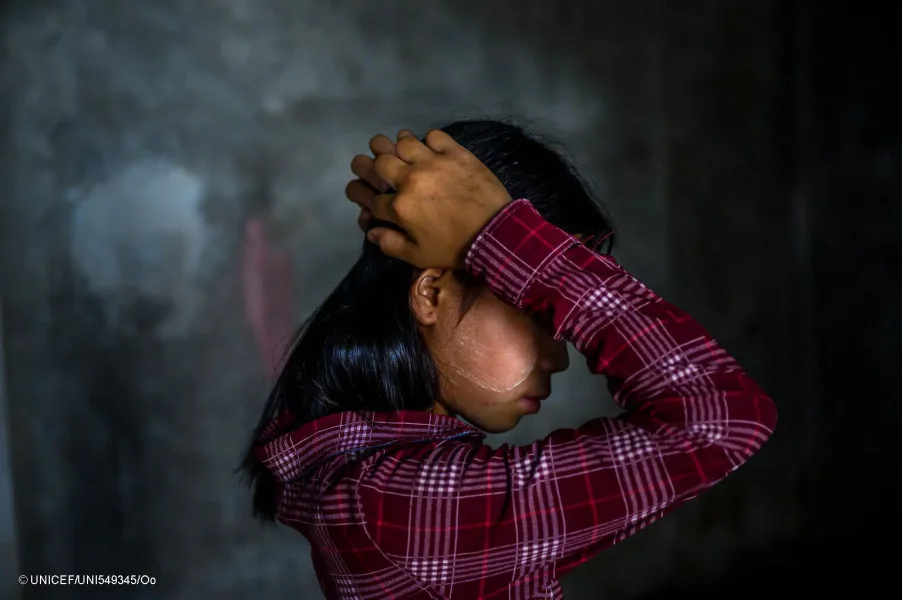
UNICEF
Grave violations against children in Myanmar have surged by over 400% since the military coup in 2021, according to a devastating new UN report published on Tuesday, just weeks after the country was rocked by a powerful earthquake.
Covering the period from July 2020 to December 2023, the report details 5,141 verified grave violations affecting more than 4,000 children—marking a sharp and deeply concerning increase driven by the expansion of armed conflict across the country.
Children Trapped in a Worsening Warzone
The Myanmar Armed Forces (MAF) and affiliated militias were responsible for nearly 80% of these violations, which include child recruitment, killings, maiming, and abductions. Armed opposition groups accounted for around 10%. The most common abuse was the recruitment and use of children, with nearly 2,200 cases confirmed.Virginia Gamba, the UN Secretary-General’s Special Representative for Children and Armed Conflict, condemned the scale of the abuses: “I’m shocked at the level of violence endured by the children of Myanmar... I urge all parties to end grave violations and ensure accountability.”
Detention and Displacement
A particularly alarming trend is the detention of children: 255 minors have been held by the military or police for alleged ties to armed groups—a 1,175% increase from the previous reporting period. Gamba stressed that such children must be treated as victims, not criminals, and that their rehabilitation should be prioritised.Attacks on schools and hospitals also skyrocketed, rising by more than 1,300% to 288 incidents, leaving thousands of children without access to essential services. Casualties from landmines and unexploded ordnance surged, with over 1,000 cases reported in 2023 alone.
Limited Progress, Mounting Need
Despite modest progress—such as the recent release of 93 child recruits by the Myanmar Armed Forces—meaningful engagement with the military remains limited. Humanitarian access to conflict zones has also worsened, particularly in Rakhine, Sagaing, Shan, and Kachin states, where the highest levels of violations were recorded.The UN is calling on the international community to fund reintegration programmes and lifesaving aid, warning that millions of children remain at extreme risk in one of the world’s most dangerous conflict zones for minors.

-2025-04-16
-
 1
1
-
-
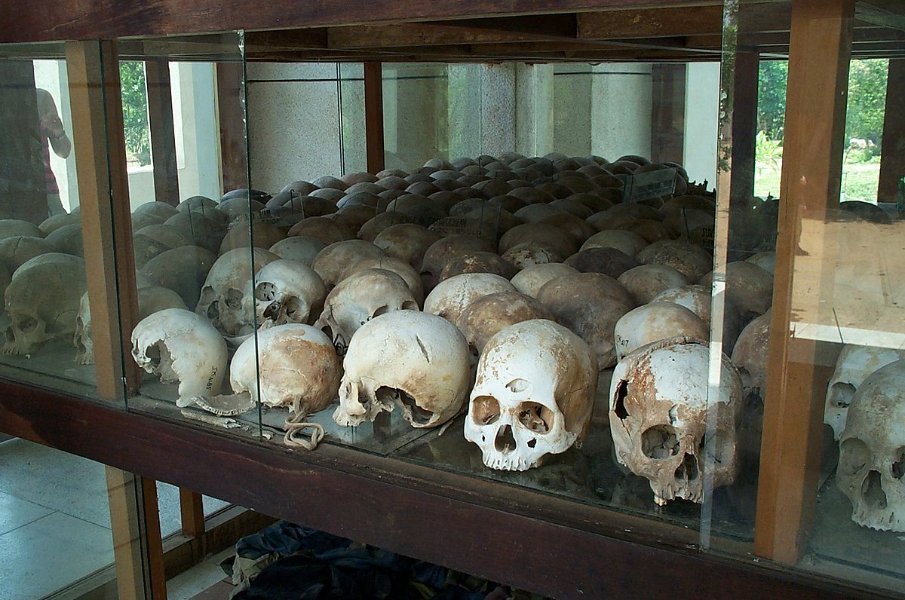
Wikipedia
Cambodia’s new genocide denial law, enacted last month ahead of the 50th anniversary of the Khmer Rouge’s rise to power, is drawing criticism from analysts and activists who fear it could be used to silence political opposition rather than safeguard historical truth.
The law imposes prison sentences and steep fines on those who deny or downplay the genocide that claimed around two million lives between 1975 and 1979 under Pol Pot’s brutal regime. While the horrors of the Khmer Rouge are widely acknowledged, some experts argue the legislation may be more about politics than justice.
A Dark Chapter, Politicised?
Former prime minister Hun Sen, who ruled Cambodia for more than three decades, introduced the law shortly before stepping aside for his son, Hun Manet. Critics say it is part of a broader effort to shape historical narratives and protect his legacy."This could become another tool to silence dissent," warned Sophal Ear, a Cambodian-American scholar at Arizona State University. Political analyst Ou Virak labelled the law a “mistake”, suggesting it could create a culture of fear around open discussion.
The Shadow of S-21
One of the most infamous sites of Khmer Rouge terror was the S-21 prison, where an estimated 15,000 people were tortured and killed. Chum Mey, one of the few survivors, supports efforts to preserve memory. “There is evidence,” said the 94-year-old. “They killed my four children and my wife.”Yet the government's approach has raised concerns. Past laws have targeted political opponents. In 2013, opposition figure Kem Sokha was accused of genocide denial after questioning whether S-21 was a Vietnamese fabrication. He has since faced repeated charges and remains under house arrest, banned from politics.
Memory or Manipulation?
Adriana Escobar Rodriguez of France’s National Centre for Scientific Research noted that denial sometimes comes in subtler forms—such as downplaying Vietnam’s role in defeating the Khmer Rouge, or disbelief that Cambodians could turn on their own.Hun Sen, himself a former Khmer Rouge commander who later fled and joined the Vietnamese campaign to oust the regime, insists the new law mirrors European bans on Holocaust denial. But for many, the concern lies in who controls the narrative—and why.
As Cambodia reflects on its darkest days, the battle over history remains far from over.

-2025-04-16
-
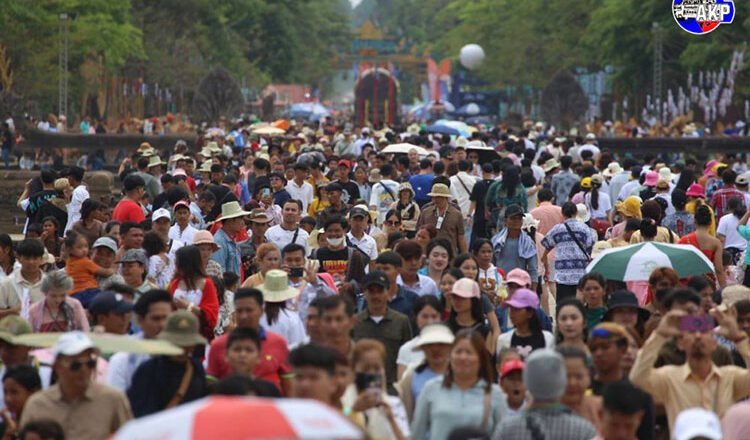 AKP
AKP
Siem Reap erupted in colour and celebration as an estimated 800,000 visitors flocked to the province for Khmer New Year festivities, marking one of the largest holiday turnouts in recent years.
The celebrations kicked off on 14 April, the first day of the traditional New Year, and saw a surge of national and international tourists, all eager to experience Cambodia’s most important cultural holiday. The main attraction, Angkor Sankranta, alone drew a staggering 760,000 people, according to Thim Sereyvuth, Acting Director of the Siem Reap Provincial Department of Tourism.
A Celebration of Culture and Spirit
Spanning multiple iconic locations—from the ancient splendour of Angkor Wat and the serene Royal Garden to the lively Pub Street and scenic riverside—the event offered a rich mix of spiritual, cultural, and recreational activities. Visitors also gathered in large numbers at Phnom Kulen (4,500), Tonle Sap Lake (6,500), and the tranquil Baray reservoir (4,000), embracing both heritage and natural beauty.While the vast majority of revellers were domestic travellers, the celebrations also drew 4,537 international tourists—an encouraging sign for Cambodia’s recovering tourism sector.
Safe, Joyful and Well-Coordinated
Authorities ensured tight security and smooth logistics, creating a safe and vibrant environment for all. The Phnom Penh Municipal Administration simultaneously hosted the Sangkran Wat Phnom 2025 festival at the historic Wat Phnom site, further enhancing the national scope of celebrations.A Boost for Tourism and National Pride
The remarkable turnout underscores Siem Reap’s enduring appeal as Cambodia’s cultural heartland. With nearly a million people engaging in the festivities, the province reaffirmed its role as both a spiritual centre and a top tourist destination during one of the Kingdom’s most treasured holidays.As the New Year ushers in the Year of the Monkey, the sheer scale and spirit of this year’s celebrations reflect not only the joy of the season but also the resilience and vibrancy of Cambodian culture.

-2025-04-16
-
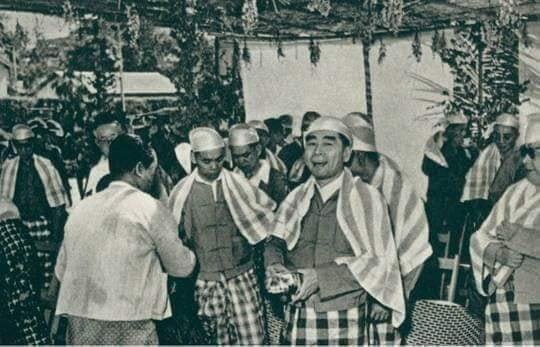
Thanks to The Irrawaddy
YANGON — On this day in 1960, Chinese Premier Zhou Enlai made a rare and symbolic gesture of goodwill by joining Myanmar’s traditional Thingyan new year celebrations alongside then-Prime Minister U Nu, marking a high point in Sino-Burmese relations.
Wearing traditional Burmese attire, Zhou embraced the festivities in Yangon—then known as Rangoon—celebrating the water festival in spirited fashion. It was a moment that underscored the strong personal rapport between the two leaders and their commitment to fostering close bilateral ties during a delicate post-colonial period.
This wasn’t Zhou’s first encounter with Myanmar’s cultural traditions. In 1957, just after recovering from illness, he travelled with Foreign Minister Chen Yi to Xishuangbanna, near the Myanmar border, to welcome U Nu during Chinese New Year. Despite warnings from Beijing colleagues to avoid exertion or getting wet, Zhou enthusiastically participated in the traditional water-throwing celebrations.
The 1960 visit wasn’t merely ceremonial. It laid the groundwork for a formal border agreement between the two nations—an issue of significant importance at the time. In the months that followed, Zhou and U Nu also cooperated to push out Kuomintang troops who had taken refuge in northern Myanmar after fleeing China’s civil war.
The images of the Chinese statesman celebrating Thingyan, shoulder-to-shoulder with his Burmese host, remain a powerful symbol of cultural diplomacy in the region’s Cold War-era history.

-2025-04-15
-
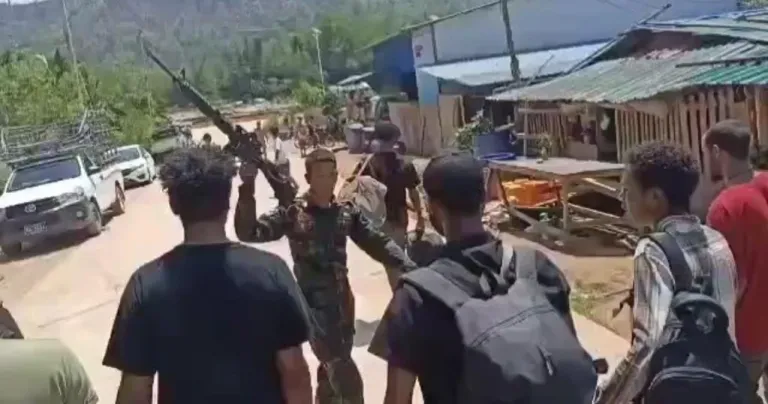
Tensions flared on the Myanmar-Thai border as a group of 275 rescued foreign scam workers, mostly from Ethiopia and other African nations, nearly clashed with armed Karen fighters while demanding to be returned home.
The group, part of a larger rescue operation in February targeting call centre compounds in Myanmar’s Myawaddy township, has been held in a squalid, overcrowded temporary camp for over two months. Facing dire conditions, including limited food, medicine, and space, the migrants staged a protest over the weekend, calling in English: “We don’t fight but we want to return home. Please release and send us to Tak province, Thailand.”
The protest quickly escalated. The group, carrying their bags, attempted to leave the camp and head towards the Thai border. Armed members of the Democratic Karen Buddhist Army (DKBA), who control the area, confronted them. Heated arguments broke out, and the situation teetered on the edge of violence, with threats of weapons being drawn.
DKBA forces eventually defused the standoff, promising to hand the group over to Myanmar junta authorities on 18 April, allowing them to begin formal repatriation.
Meanwhile, Thai military units remain on alert along the Mae Sot border, enforcing tight controls to prevent illegal crossings. Senior Thai officers reiterated that over 8,000 scam victims have already been repatriated through official channels. Any unauthorised border crossings, they warned, will result in prosecution.
The Thai government maintains that delays in the repatriation process lie with the migrants’ home countries, many of which are not yet prepared to receive them.
Back in February, Thailand took a hardline stance against scam operations by cutting off electricity, internet, and fuel supplies to three Myanmar border townships, including Myawaddy. The move was aimed at disrupting transnational criminal gangs operating call centres and trafficking rings in the area.
For the rescued workers, however, the wait for safe return continues — trapped between armed militias, unliveable conditions, and bureaucratic inertia.

-2025-04-15
-
 1
1
-
-
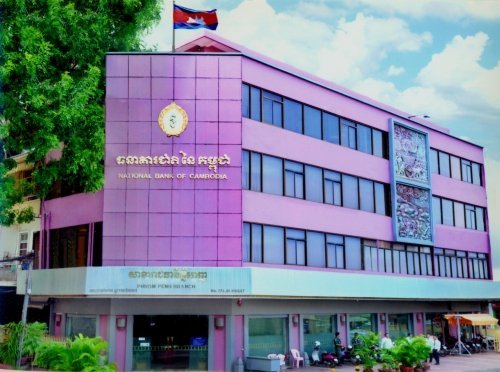
NBC
Cambodia has officially joined Southeast Asia’s regional payment connectivity initiative, marking a major step toward deeper financial integration across the ASEAN bloc.
The National Bank of Cambodia (NBC) confirmed its participation during a high-level meeting in Kuala Lumpur on 8 April, where the second phase of the Malaysia-Cambodia QR payment system was also launched. The announcement came on the sidelines of the 12th ASEAN Finance Ministers’ and Central Bank Governors’ Meeting.
Cambodia becomes the ninth ASEAN member to join the Regional Payment Connectivity (RPC) initiative, which was first launched in 2022 by the central banks of Indonesia, Malaysia, the Philippines, Singapore and Thailand. The pact has steadily expanded, with Vietnam joining in 2023, followed by Brunei and Laos earlier this year.
The RPC aims to make cross-border payments faster, cheaper, and more transparent. It supports payment technologies such as QR codes and real-time transactions, allowing consumers and businesses to move money seamlessly across borders. For small and medium-sized enterprises in particular, the system promises easier access to regional markets and improved trade and remittance flows.
“Participating in the RPC initiative will foster regional economic growth and establish a more interconnected payment system within ASEAN,” said Dr Chea Serey, Governor of the National Bank of Cambodia.
The move highlights Cambodia’s growing role in ASEAN’s digital economy and its ambition to modernise financial infrastructure. It also signals continued momentum behind efforts to harmonise payment systems in the region—crucial for strengthening intra-ASEAN trade and financial resilience.
With the addition of Cambodia, the RPC’s expanding membership reflects broader regional aspirations to make cross-border transactions as simple as domestic payments. Observers expect more ASEAN economies—and possibly partners beyond the region—to adopt similar frameworks in the near future.

-2025-04-15
-
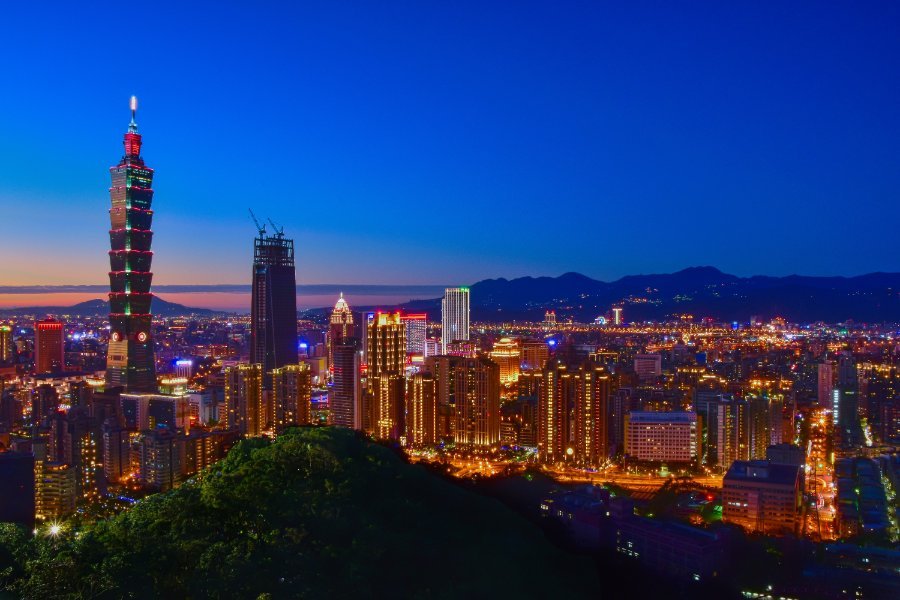
Taipei
TAIPEI — Tensions have flared between Taiwan and Cambodia after nearly 190 online fraud suspects, many believed to be Taiwanese, were deported to China without prior notice or confirmation of their identities.
Taiwan’s foreign ministry has strongly protested Cambodia’s decision, accusing it of bowing to pressure from Beijing and failing to follow international norms. The deportations followed a major police raid in Phnom Penh on 31 March, which saw the arrest of around 180 Taiwanese nationals and seven alleged Chinese co-conspirators linked to a sprawling online scam operation.
Despite early engagement from Taiwan’s representative office in Ho Chi Minh City, which requested that the suspects be returned to Taiwan, Cambodian authorities moved ahead with the deportations to China late on Sunday and into Monday. No complete list of names or nationalities has been provided.
“Cambodia, under pressure from China, did not provide a list of our country’s nationals or the total number deported,” Taiwan’s foreign ministry said in a statement, expressing “serious concern and protest”.
Cambodia does not formally recognise Taiwan and, like most countries, supports Beijing’s position that Taiwan is a part of China. This has routinely complicated Taiwan’s attempts to secure the return of its citizens arrested abroad, particularly in fraud cases. Between 2016 and May 2024, more than 600 Taiwanese nationals detained overseas have been deported to China, not Taiwan.
The ministry has again urged Cambodian authorities to respect international practice and hand over suspects to their home jurisdiction. It also issued a warning to Taiwanese citizens against participating in illegal overseas ventures, particularly in telecom fraud schemes, which have proliferated in the region.
Cambodia has become a hotbed for such operations, often run by Chinese criminal networks based in heavily guarded compounds. Victims — frequently trafficked from Taiwan, Myanmar, and elsewhere — are lured by fake job offers and coerced into running online scams.
Cambodia’s increasingly close ties with China, now its largest economic partner, have raised wider geopolitical concerns. Massive infrastructure projects and deepening military cooperation — including the controversial expansion of the Ream Naval Base — signal a growing Chinese presence in the region.
Neither the Cambodian nor Chinese governments have commented on the deportations.

-2025-04-15
-
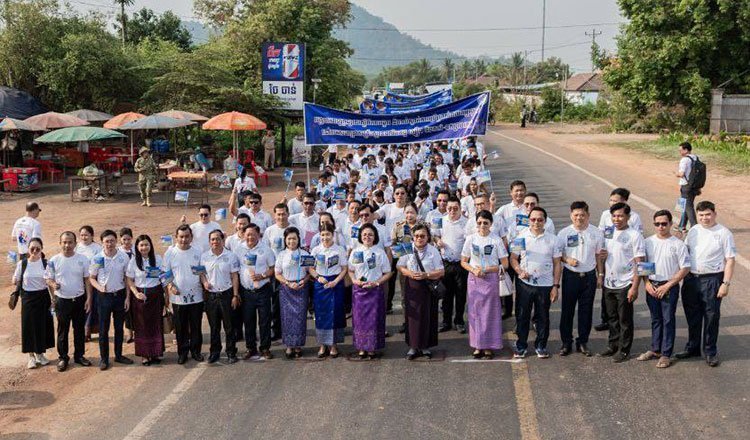
Ministry of Labour
The Cambodian government has launched a fresh campaign to combat child labour in the country’s brick, tile, and agro-industrial sectors, with a focus on raising awareness and tightening enforcement in rural communities.
Led by Secretary of State Soeung Sarsochetta, the Ministry of Labour and Vocational Training rolled out the initiative on Tuesday in Banteay Srei district, Siem Reap. Over 300 participants, including brick factory owners and local officials, attended the event.
The campaign aims to prevent the most severe forms of child exploitation by informing employers, parents, and community leaders about the dangers of child labour, and by introducing labour inspection measures. It forms part of a broader national strategy to eradicate child labour from high-risk industries through community engagement, law enforcement, and cross-sector collaboration.
Sarsochetta emphasised the importance of local authorities, police, and civil society in enforcing standards and creating safer environments for children. She urged all stakeholders to support the “One Enterprise, One Peaceful Community” initiative, which advocates for child labour-free workplaces.
The campaign also encourages improved reporting systems through hotlines and online platforms, alongside strengthening the capacity of labour inspectors and child protection officers.
The renewed focus follows growing criticism over the government’s handling of the issue. A 2023 report by rights group Licadho found that child labour and debt bondage remain widespread in Cambodia’s brick industry, driven by poverty, weak enforcement, and exploitation by employers. The report also criticised international brands for indirectly fuelling the problem through practices like waste burning in brick kilns.
Sarsochetta acknowledged these concerns, calling for greater coordination among ministries, employers, and NGOs to ensure lasting change.
As Cambodia continues its push for industrial development, the campaign is a reminder that economic progress must not come at the cost of children’s rights and wellbeing.

-2025-04-14
-

Tourists and locals in Siem Reap can now enjoy free internet access at key locations, thanks to a new initiative by Cambodia’s Ministry of Post and Telecommunications.
The ministry announced on Sunday that public WiFi is now available at major landmarks across the province, including the world-renowned Angkor Archaeological Park, the night market, and other heavily frequented public areas. The move aims to support both residents and the growing number of domestic and international visitors to the historic region.
“In recognition of the increasing need for internet access… and in response to positive public feedback, we are pleased to provide free public WiFi,” the ministry shared via its official social media channel.
Users can connect to the network by selecting PUBLIC WIFI BY MPTC or by scanning QR codes posted at participating locations. A full map of access points is available on the ministry’s website: https://mptc.gov.kh/public-wifi.
The initiative reflects broader efforts to enhance digital connectivity across Cambodia and boost the tourism sector, which continues to recover following the disruptions caused by the COVID-19 pandemic.
While no end date for the service has been announced, the ministry’s tone suggests the programme is part of a longer-term plan to make internet access more inclusive and accessible throughout the country.

-2025-04-14
-
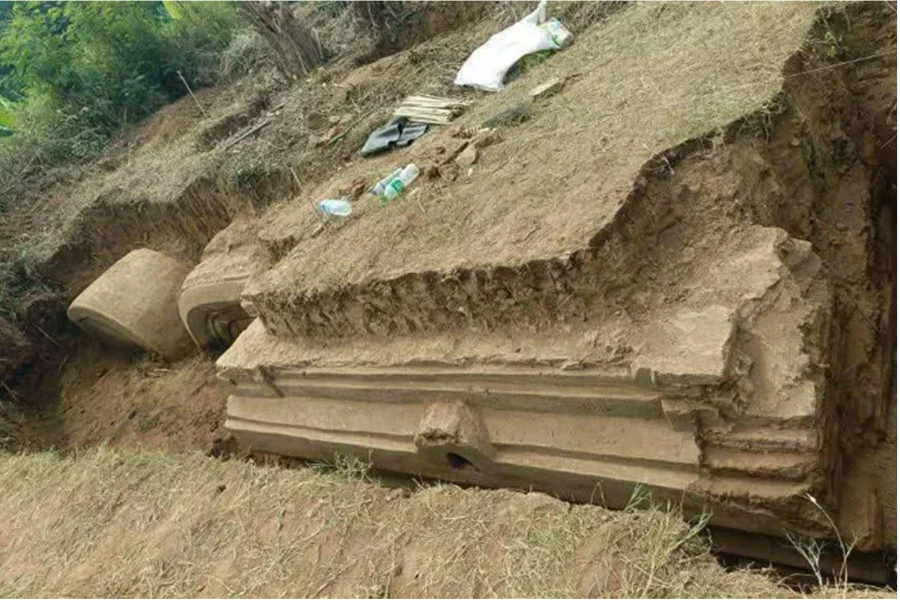
Emerging ruins in Inwa, Myanmar following a massive earthquake. Courtesy Myanmar's Department of Archaeology and National Museum
A massive earthquake in Myanmar has revealed the remains of what may be a royal water palace, offering an extraordinary glimpse into the country’s imperial past.
The 7.7-magnitude quake, which struck late last month and killed thousands, not only caused widespread devastation but also unearthed ancient ruins near Inwa, close to the town of Tada-U in central Myanmar. The newly exposed site is believed to date back to the Konbaung Dynasty, the last royal dynasty before British annexation in 1885.
Archaeologists say the structure includes stairways, foundation walls, and the remains of pavilions—features that match descriptions in centuries-old palm-leaf manuscripts. The site was likely part of Ratnapura Ava, or the "City of Gems," an imperial capital used by Burmese monarchs between the 14th and 19th centuries.
Parts of the structure—specifically the southern Thayetkin staircase—were first discovered in 2009 by local residents and later maintained by Myanmar’s Department of Archaeology and National Museum. However, the recent earthquake has revealed previously hidden sections, believed to be part of a ceremonial water structure used by kings for ritual purposes.
“This is a monumental discovery,” one official said, highlighting plans to fully excavate and preserve the site. Authorities hope to make it accessible to the public in future, as both an educational resource and a reminder of Myanmar’s deep cultural heritage.
Inwa itself is steeped in history. Once repeatedly looted and rebuilt, it was finally abandoned after a series of major quakes in 1839. The recent seismic activity appears to have once again shifted the earth—this time revealing rather than destroying.
The discovery has sparked renewed interest in the region’s past, even as the country grapples with a humanitarian crisis caused by the earthquake and ongoing conflict. Amid the ruins, a fragment of Myanmar’s lost royal splendour has come to light.

-2025-14-14
-
 1
1
-
-
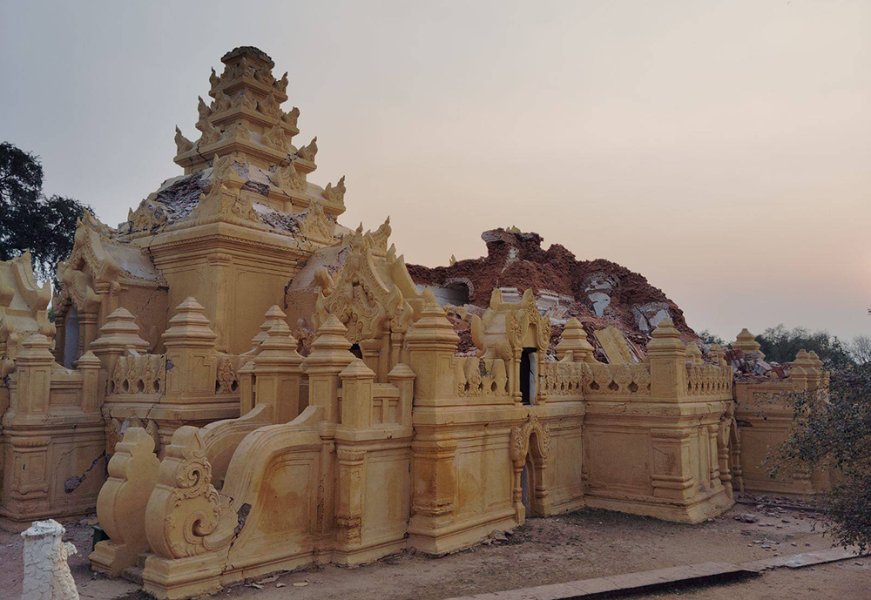
The heavily damaged Me Nu Brick Monastery in Innwa after 03/28 earthquake / The Irrawaddy
A 5.5-magnitude earthquake struck central Myanmar early Sunday, prompting panic as residents fled their homes—just weeks after a deadly temblor devastated large parts of the country.
The tremor, centred near Meiktila in the Mandalay Region, was one of the strongest aftershocks yet following the catastrophic 7.7-magnitude earthquake on 28 March. That disaster killed at least 3,649 people and injured more than 5,000, according to Myanmar’s military government.
Sunday’s quake, though less powerful, rattled nerves and damaged buildings across towns near the epicentre. In Wundwin township, residents reported cracked walls, ceiling damage, and a rush of people fleeing into the streets in fear. “People rushed out of buildings,” one local told Associated Press, speaking anonymously due to fear of reprisal from military authorities. Another described minor debris falling inside homes.
Meanwhile, residents in Naypyitaw, the capital, said they did not feel the tremor—highlighting its more localised impact. Still, the psychological toll was evident as the country, already reeling from the March disaster, faces renewed anxiety.
The original quake flattened villages, crippled hospitals, and disrupted key infrastructure, deepening an already dire humanitarian crisis. The UN last week warned that the destruction is compounding existing challenges, including ongoing armed conflict and the displacement of over 3 million people.
The timing of the aftershock added to the national trauma. It struck during Thingyan, Myanmar’s traditional New Year holiday, which had already been cancelled in mourning for recent victims.
Although no new casualties have been reported from Sunday’s tremor, the event underscores the region’s vulnerability and the population’s fragile sense of safety. With information tightly controlled and criticism of the military restricted, many residents remain fearful—not just of further quakes, but of speaking openly about their plight.

-2025-04-14
-
 1
1
-
-
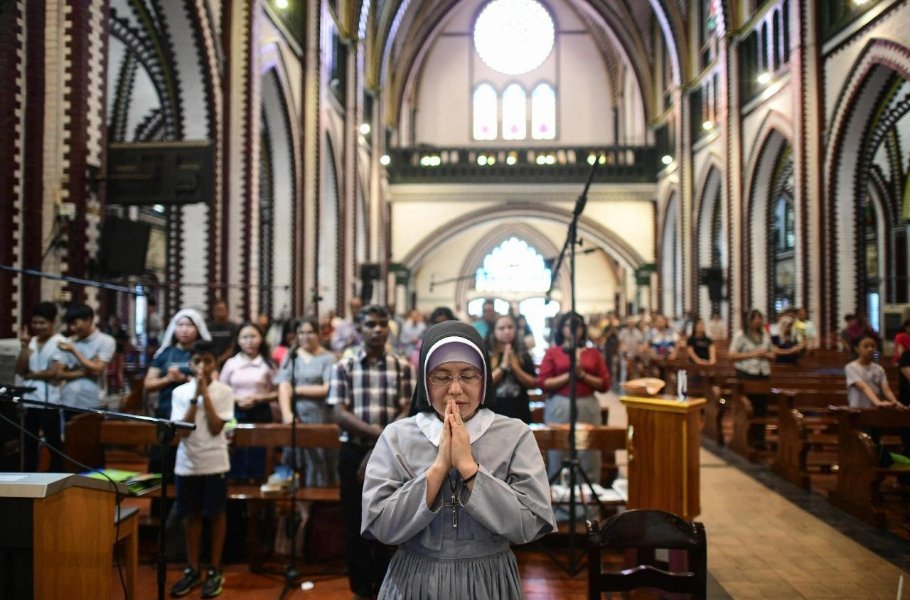
A recently built Catholic church in Myanmar’s Christian-majority Chin State has been destroyed in an airstrike by the military junta, the latest in a wave of attacks targeting places of worship amid the country’s grinding civil war.
The Church of Christ the King, located in the town of Falam and part of the Diocese of Hakha, was bombed on 8 April as government forces continued air assaults following their loss of ground to local resistance fighters. Though the church’s walls remain standing, the roof and interior were left in ruins, according to local reports.
Consecrated only in November 2023, the church had replaced a small chapel that served the Catholic community for over 75 years. Built with significant local effort and sacrifice, it had become a vital spiritual centre for the town’s roughly 1,000 Catholics.
“There is great sadness now in the community,” a source told Fides News, “but also the desire and determination to rebuild.”
Falam has seen fierce clashes over the past nine months between Myanmar’s army and the Chinland Defence Force (CDF), a local militia resisting military rule since the 2021 coup. After losing control of the city to the CDF, the junta resorted to aerial bombardments — a tactic increasingly used across the country.
This is not the first time churches have been targeted. In February, another airstrike damaged the Church of the Sacred Heart of Jesus in Mindat, set to become the cathedral of a newly established diocese announced by Pope Francis earlier this year.
According to the Chin Human Rights Organization, at least 107 religious buildings — including 67 churches — have been destroyed by military airstrikes in Chin State alone since the conflict began.
The destruction of the Church of Christ the King is a stark reminder of the heavy toll Myanmar’s war continues to exact on religious minorities, civilian life, and cultural heritage — often without distinction or warning.

-2025-04-12
-
 1
1
-
-

Myanmar’s military regime is facing growing resistance to its forced conscription programme, with thousands of young men and women fleeing the country or going underground to avoid being sent to war.
One year after the junta launched its conscription drive, an estimated 60,000 recruits have been drafted—many against their will. The policy, revived in early 2023 as the army struggled with battlefield losses and desertions, has triggered widespread fear, defiance, and a mass exodus of would-be conscripts.
Under the law, men aged 18 to 35 and women aged 18 to 27 can be forced into service. Those who refuse face up to five years in prison. Reports suggest some young people have been abducted from bus stops or coerced at gunpoint, while others, like 29-year-old teacher Aung, have fled the country entirely.
“I don’t want to be part of the killers,” Aung said from a safehouse in Thailand. “They are destroying the whole country.”
Analysts say the military is using conscripts as frontline fodder, often rushing them into combat with minimal training. Some draftees have been used as human shields or sent to dismantle explosives, leading to high casualties and further desertions.
Despite the surge in numbers, experts argue the draft has failed to shift momentum in a civil war that has raged since the 2021 coup. Rebel groups have captured key bases, and the military’s control may now extend to less than a quarter of the country, excluding major cities.
The draft has bought time for the regime, shoring up defences and allowing limited offensives. But it’s no solution to what analysts describe as a “historic weakness” in the military.
As pressure mounts from China for negotiations, some speculate the junta’s endgame may now be to hold ground until a ceasefire becomes viable.
In the meantime, those like Aung live in limbo — out of reach of the regime, but never out of danger. “If I’m forced back,” he said, “I know exactly what will happen. And I won’t survive it.”

-2025-04-12
-
 1
1
-
 1
1
-



Cambodia, China Seal $1.2bn Deal for Strategic Canal Project
in Cambodia News
Posted
Ministry of Information
PHNOM PENH — Cambodia and China have signed a landmark $1.2 billion agreement to develop the Funan Techo Canal, a major infrastructure project aimed at transforming Cambodia’s transport and logistics landscape.
The deal was inked on 17 April during Chinese President Xi Jinping’s state visit to Cambodia, in the presence of key Cambodian leaders including Prime Minister Hun Manet and Senate President Hun Sen. The project reflects deepening ties between the two nations and a shared strategic vision.
Stretching over 150 kilometres from the Bassac River near Phnom Penh to Kep province on the coast, the canal will create a vital inland waterway capable of handling vessels up to 3,000 deadweight tons. It’s billed as a multi-purpose initiative spanning trade, agriculture, water management, and climate resilience.
Deputy Prime Minister Sun Chanthol hailed the project as a “modern revival of a historic route” and a “symbol of cooperation” between nations. He signed the public-private partnership (PPP) contract on behalf of Cambodia, while Chinese state-owned China Communications Construction Company (CCCC) leads the project’s delivery.
Mr Wang Tongzhou, Chairman of CCCC, called the canal a “new engine” for Cambodia’s economy. Once completed, it’s expected to significantly lower logistics costs and support the country’s ambition to move up the industrial value chain.
Five key agreements were signed, including investment and operation deals, engineering procurement contracts, and a shareholders' agreement—cementing long-term collaboration between Cambodian authorities and Chinese firms.
Chinese Ambassador Wang Wenbin stressed that China “fully recognises Cambodia’s needs” and is committed to sustained support for the project, which aligns closely with Beijing’s Belt and Road Initiative.
With construction poised to reshape Cambodia’s connectivity and economic potential, the Funan Techo Canal stands as a bold step toward regional integration—bridging past and future through 21st-century infrastructure.
-2025-04-21